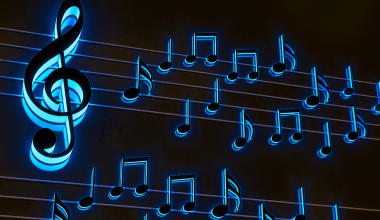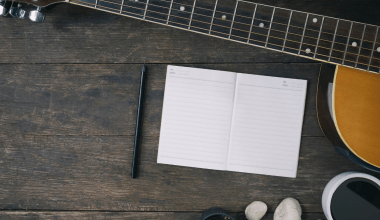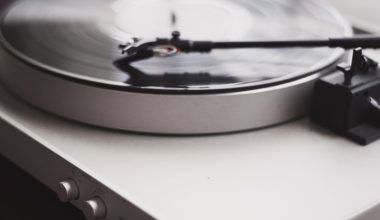Blues guitar riffs are the soul of blues music. These small but powerful musical phrases carry deep emotions, tell stories, and make you feel like you’re part of something bigger. Whether you’re just starting with the guitar or you’ve been playing for a while, learning blues guitar riffs is one of the most rewarding things you can do. In this guide, we’ll explore what blues riffs are, why they matter, and how you can play them effortlessly.
What Are Blues Guitar Riffs?
Think of a riff as the catchy part of a song that gets stuck in your head. In blues music, riffs are repeated patterns of notes or chords that form the heart of the song. They’re usually simple but full of feeling. A blues guitar riff can be as short as two or three notes, yet it can say so much.
The best thing about blues riffs is that they’re easy to learn but give you endless possibilities to make them your own.
Why Learn Blues Guitar Riffs?
Blues riffs are the foundation of many music styles, like rock, jazz, and even pop. By learning these riffs, you’ll unlock new ways to play the guitar and make your playing sound more expressive. Here’s why every guitarist should learn blues guitar riffs:
- Emotional Connection: Blues riffs help you express feelings like joy, sadness, or excitement.
- Better Skills: They improve your finger strength and understanding of music.
- Improvisation: You’ll be able to create your own riffs and solos.
The History of Blues Guitar Riffs
Blues music started in the southern United States in the late 1800s. It came from African-American communities who used music to share their struggles and joys. The guitar became an important part of blues in the early 1900s, with artists like Robert Johnson and B.B. King creating riffs that are still loved today.
How to Get Started with Blues Guitar Riffs
If you’re new to guitar or to blues, don’t worry. You don’t need fancy skills to start. Here’s how to begin:
1. Pick the Right Guitar
An acoustic guitar works fine, but an electric guitar is often used for blues because it gives you a fuller sound.
2. Learn the Basics
Start with the pentatonic scale. It’s a simple scale that’s the backbone of many blues riffs.
3. Use Backing Tracks
Playing with a backing track will make you feel like you’re in a real band. You can find free tracks online.
Basic Techniques for Blues Guitar Riffs
1. Bending
This is when you push a string up or down to make the note higher. It makes your playing sound like it’s singing.
2. Hammer-Ons and Pull-Offs
A hammer-on is when you press down on the string to create a note without picking it. A pull-off is when you release the string to play a lower note.
3. Sliding
This is when you slide your finger along the string to go from one note to another. It adds a smooth, cool vibe to your playing.
4. Palm Muting
Rest your picking hand lightly on the strings near the bridge to create a softer, percussive sound.
Easy Blues Guitar Riffs to Try
Here are three simple riffs to get you started:
1. “Sweet Home Chicago” by Robert Johnson
This classic riff is built on a simple pattern and is great for beginners.
2. “Pride and Joy” by Stevie Ray Vaughan
A bit more advanced, this riff combines rhythm and melody perfectly.
3. “Smoke Stack Lightning” by Howlin’ Wolf
This is a repetitive riff that’s easy to learn and fun to play.
How to Practice Blues Guitar Riffs
1. Start Slow
Play each riff slowly to get the notes right. Speed up only when you’re comfortable.
2. Use a Metronome
A metronome helps you keep time, which is very important in blues.
3. Focus on Feeling
Blues is about emotion. Don’t just play the notes—make them sing.
4. Practice Daily
Even 10 minutes a day can make a big difference.
Creating Your Own Blues Guitar Riffs
Once you’re comfortable with playing riffs, it’s time to make your own. Follow these steps:
- Pick a Key: Start in an easy key like E or A.
- Use the Blues Scale: Experiment with notes from this scale.
- Add Expression: Use bending, slides, and vibrato to give your riff personality.
- Repeat and Refine: Play your riff over and over until it feels just right.
Common Mistakes to Avoid
- Playing Too Fast: Blues is about feeling, not speed.
- Skipping Rhythm Practice: A good riff needs a steady rhythm.
- Ignoring Dynamics: Play some notes softly and others louder to add emotion.
Famous Blues Guitarists and Their Riffs
1. B.B. King
Known for his smooth vibrato and melodic riffs, B.B. King is a legend in blues music.
2. Eric Clapton
Clapton’s riffs are a mix of blues and rock, making them exciting to play.
3. Jimi Hendrix
Though known for rock, Hendrix’s style is rooted in blues. His riffs are full of creativity.
Gear for Blues Guitar Riffs
You don’t need expensive gear to play blues, but a few things can make a difference:
- Electric Guitar: A Stratocaster or Les Paul is perfect for blues.
- Amp: Look for one with a good overdrive setting.
- Slide: A glass or metal slide adds a unique sound.
Why Blues Guitar Riffs Are Timeless
Blues riffs never go out of style. They’re simple yet powerful and can be adapted to fit any genre. Whether you’re playing alone or in a band, they always add depth and emotion to your music.
Final Thoughts
Learning blues guitar riffs is more than just playing the guitar. It’s about connecting with a rich musical tradition and expressing yourself in a way words can’t. Start small, keep practicing, and most importantly, have fun. The blues isn’t about perfection—it’s about passion.
Now, grab your guitar and start riffing!
Related Articles:
For further reading, explore these related articles:
For additional resources on music marketing and distribution, visit DMT RECORDS PRIVATE LIMITED.






